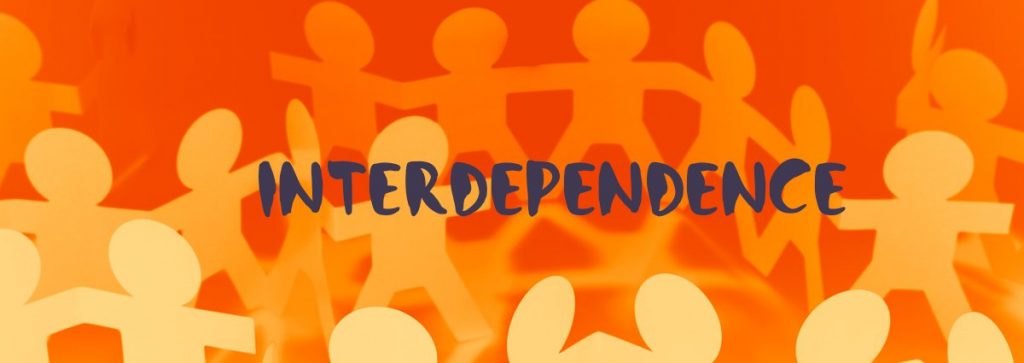About five years ago, I was in the midst of trying to create a “Learning Ecosystem” which would seamlessly integrate a handful of large, commercial platforms and a bevy of smaller tools into what should feel (to students, staff, and faculty) like a single experience.
To do this, my team and I employed some seriously creative methods. For instance, once we had curated the five major platforms, we brought their best technical representatives to our university and held a summit. For a full day we locked ourselves in a room with these company’s technologists, going back and forth around integration, user experience, look and feel, interoperability, and more. The end result was an “interdependent” system which, according to surveys, soon felt like a single experience to our students, faculty, and staff. Through white labeling every tool, we created a dynamic, plug-n-play system to deliver both learning and non-learning applications alike. We did it.

But during that experience, there were a few tools which needed to be added to the mix coming directly from various departments or back-office groups. Some were legacy and others were needed, but not licensed yet. One such tool surfaced during an interview with an academic department and so I added it to our list of vendors and started making some calls. But one of the Vice Presidents soon asked (directed) me to give up that search, placing the job of finding a new tool back in the hands of the departments who would form a committee. Fair enough.
The end result was a debacle. When we asked the chosen vendor to join our ecosystem they immediately started questioning why. Soon, they started talking about scope issues and the need to add charges and the inability of the system to do what had originally been promised and an unwillingness to port over data and a lack of training program and more and more… We found ourselves in the midst of a true vendor horror story.
Juxtapose that experience with one from a decade earlier. I was working for an LMS company and we soon found ourselves supporting a consortium of community colleges in Iowa. Over the course of a few years, three of our company representatives became closely aligned with the staff from the consortium office. I (personally) provided dozens of trainings, workshops, keynotes, and was brought in to consult with matters of strategy and initiatives. Our client success rep had monthly meetings with them, including high-level planning sessions which included CAOs from each college. But possibly the most telling marker was that our account manager was invited to the consortium’s budget and oversight meetings.
Why? The answer is simple. We were not vendor and customer, we were partners.

We were essentially extensions of each other’s operations.
They trusted us not to take advantage of their situations, which I can honestly say we never did. Similarly, they became trusted partners for our platform, guiding functionality discussions as well as helping with marketing suggestions. We knew them. They knew us. We were essentially extensions of each other’s operations.
Flash forward to today.
At Campus, we have just spent the past few weeks talking with our partners about…well, partnership. We held our inaugural Campus Advisory Group meeting, inviting some of the leaders from our schools to talk with us about what they like, what they desire, and what should change. Similarly, we have been writing a multi-case study about implementation and the difference it makes when there is a context of true partnership.
It has been incredibly rewarding to see and hear the words spoken by our partners during these encounters. “Working with you has been a delight” was actually said. “You get us,” and, “we have a shared goal of student success” are comments we have heard.
Much of that has translated into pragmatic success, seeing partners launch on time, despite pretty aggressive timelines, and even seeing one partner launch early, because of the power of our platform and our culture of our people.
It is not ironic that three of our executive team members are former college / university admins. That was by design. Our team has more than 75 years in formal, higher education positions sitting on the other side of the table. We have worked with vendors and we have worked with partners. And we all know the difference, but more importantly, understand the power in partnership.
So when Bret Ingerman, nationally recognized Chief Information Officer (VP for IT) at Tallahassee Community College, with a formidable team of developers he has assembled, notes that he is thrilled to have found a company who understands that we are custodians of his data, not owners of it, we get it. We asked for the same data considerations (and rarely got them) from our LMS providers, our SIS providers, and our ERP vendors. We hated being charged for data that was ours. We could not believe how hard it was to get our people’s information out of a system, let alone into another one. So we make sure that our partners’ data is just that – our partners’.
When Dan Mills, Director of IT at Cornerstone University, tells us that after the first demonstration of the platform, he hung up the phone and told his team, “That’s the one. That is what we need at Cornerstone,” it’s reassuring that we are on the right path. But when he expresses that, “In my 25 years in I.T., I’ve not experienced a simpler system to implement than Campus,” that is music to our ears.
Even as these leaders go beyond the integrations and configuration work that we pride ourselves on, it is humbling and reassuring to hear that we are handling people in ways that people would like to be handled. Joe Mancini, Executive Director of IT for Montgomery County CC told us, “For Montgomery it’s important that the vendor understand the uniqueness of our students and the needs that they have. So far, I have found the relationship with Campus to be very accommodating. They’ve taken the time to listen to our stories, input, and have turned some of that into actual functionality, featured within the product so that it better matches and aligns with our needs.”
So, while we have gotten a slew of new ideas, helpful direction, and powerful suggestions for the future of our platform and our company, it has also been a time of reassurance and satisfaction. Not only is our platform really onto something needed in higher ed (also likely a result of having so much formal experience on the team), but our partnership model seems to be much needed, too. (Unfortunately for ed tech, we hear that our approach to partnership is rare, but for us, it is the only way we can think to work with others.)
If you are interested in our multi-case study, detailing what a partnership model for implementation entails, I encourage you to read the entire paper. It not only tells a story we are proud of, but could also be used as a filter or litmus test for other engagements with other companies. As well, if you would like to see some of the testimonials in person, our YouTube channel has five videos about implementing with Campus, but from that perspective of partnership.
And obviously, if you are interested in talking with us about a far more modern, connected, mobile, and social hub for your students, faculty, and staff, we are a click away. But know that while our tagline is, “Beyond a Portal” we try to take a similar approach to partnership, going beyond customer service to a legitimate, meaningful, interdependent relationship.
Dr. Jeff D. Borden
Chief Academic Officer
